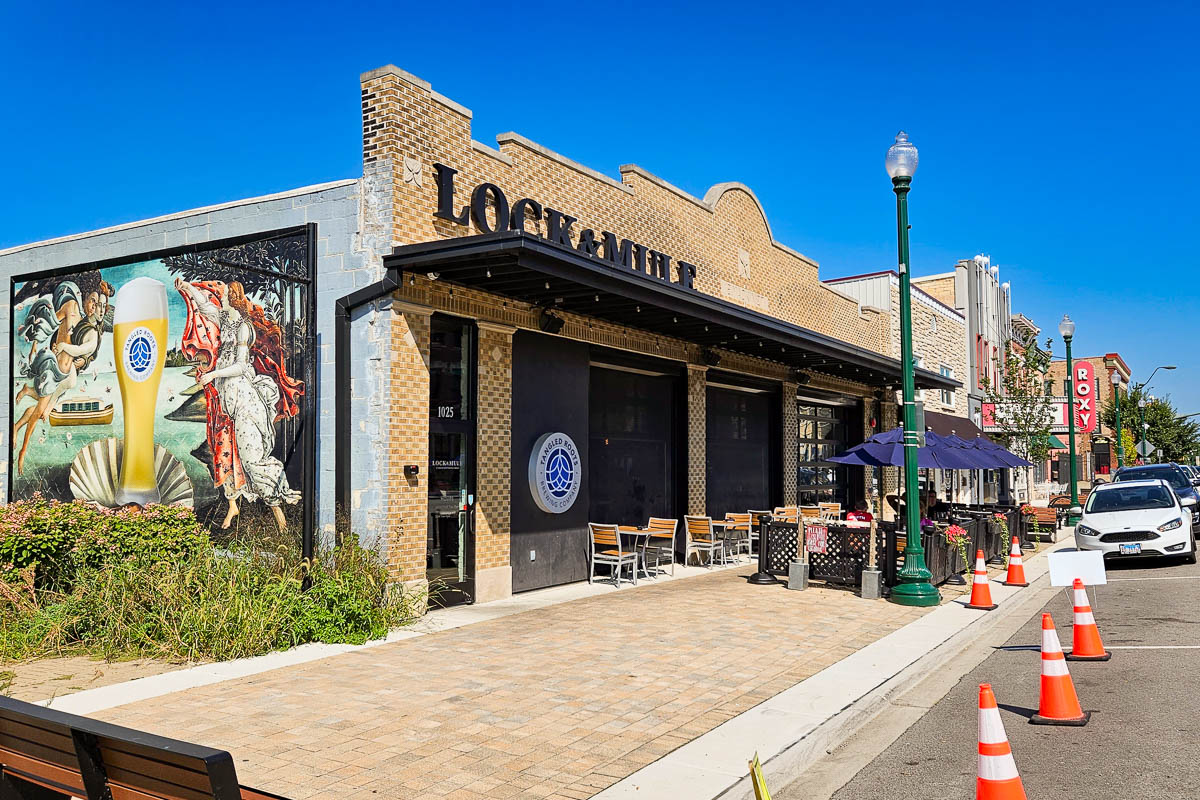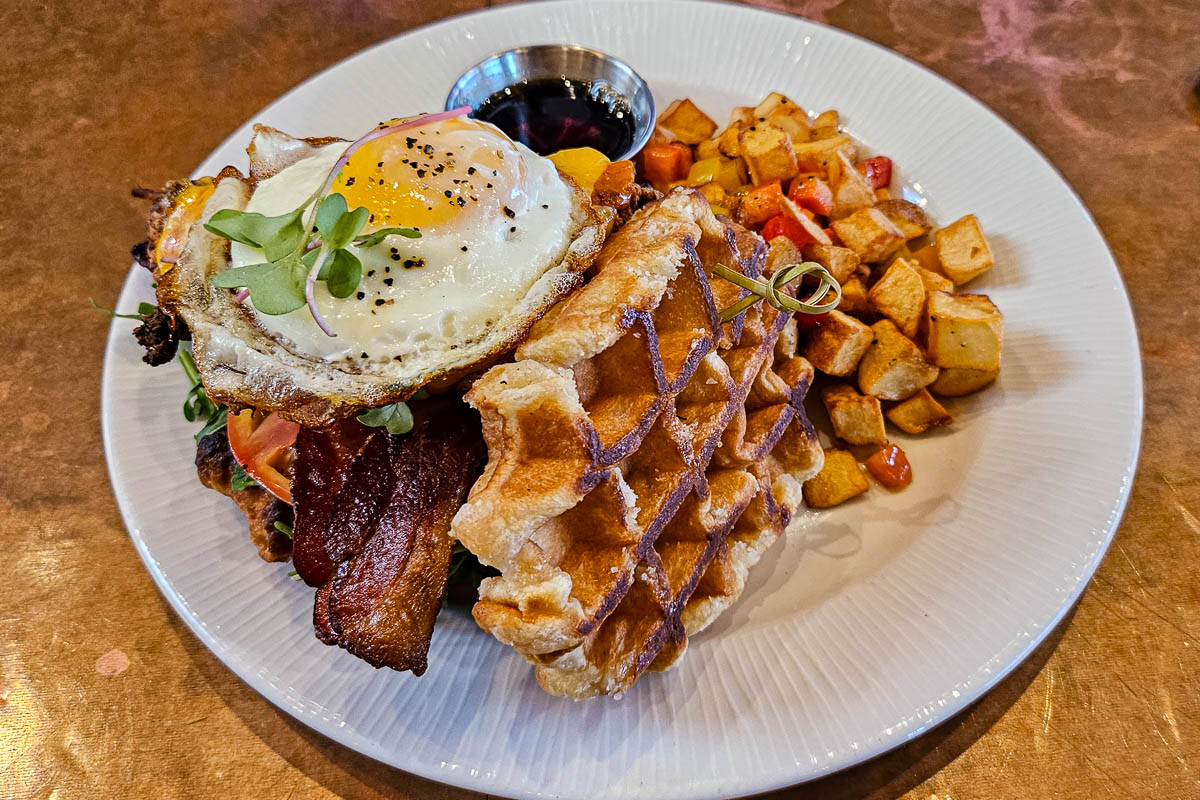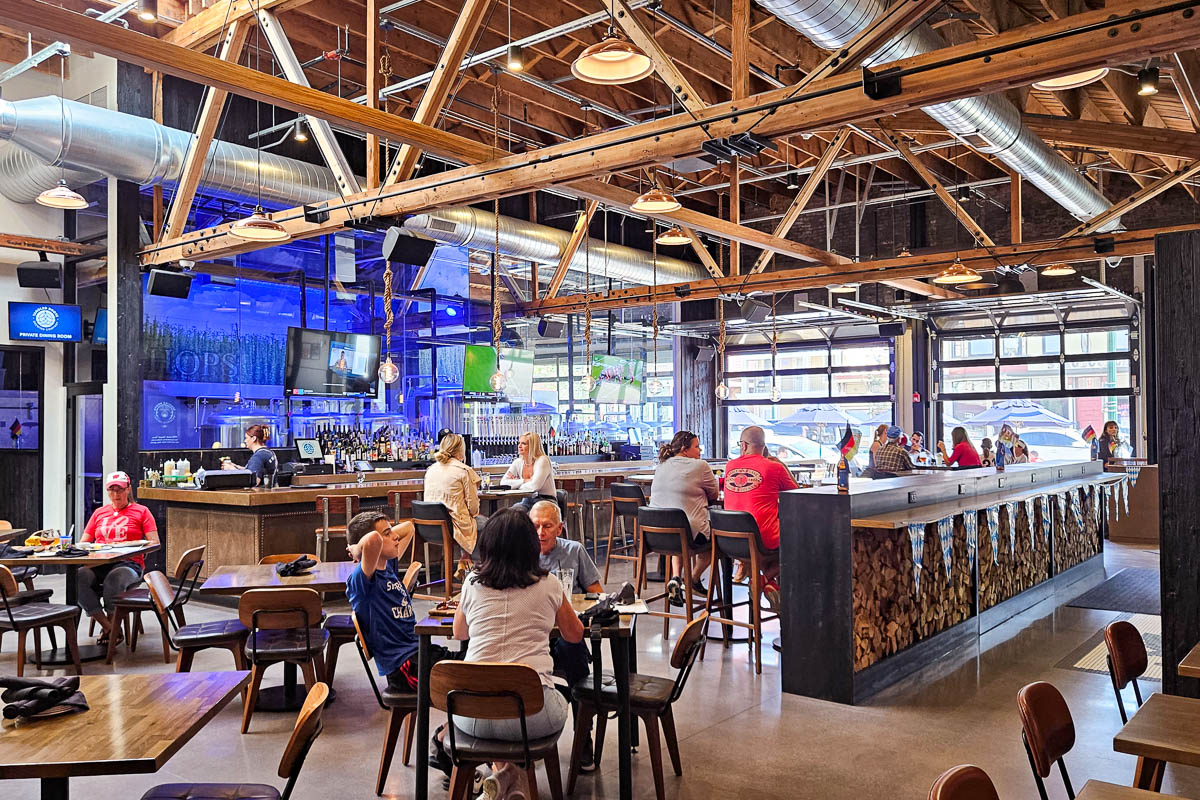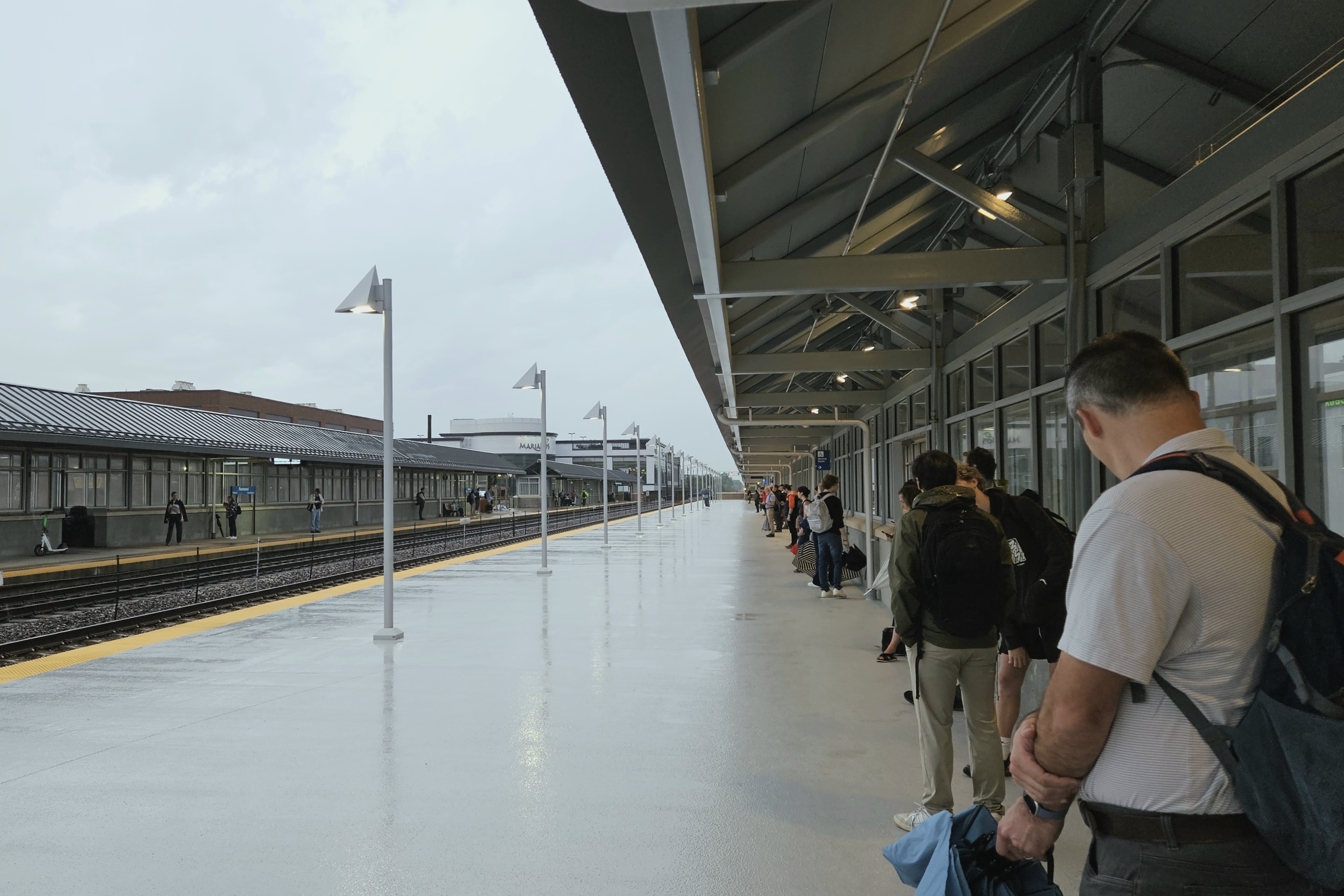Last weekend I made approximately 5 liters of chicken soup due to an unfortunate decision midway through the process to add more salt. Given the saltiness of the soup I put in mason jars, I recommend a 3:2 ratio of soup to water, meaning I effectively made 8 liters of soup. Most of it is in my freezer now, in convenient 250 mL jars, one serving apiece.
Suffice it to say I have had chicken soup for lunch 3 times this week. It is, however, very delicious. Except for over-salting it (which is easily corrected and preventable in future), I know what I'm doing.
Elsewhere in the world, things are not so delicious:
- Alex Shepard says the real reason House Republicans can't elect a speaker—Jim Jordan (R-OH) just failed for the third time in as many days—is because they don't have "any actual objectives beyond stymying the Biden administration and blocking liberal priorities."
- Andrew Sullivan throws up his hands at a party unfit for government.
- Dana Milbank chuckles at the Republicans wanting to "go to Gettysburg or something," which most people remember as the place the slave-owning South effectively lost their rebellion. "Washington isn’t broken," he writes. "The House of Representatives is broken — because you and your Republican colleagues broke it."
- Possibly related to the House GOP, Arthur Brooks outlines the "Dark Triad" type of malignant narcissist, and how to avoid them.
- Possibly related to that, Molly White continues her coverage of the SBF trial, today focusing on the confusing defense his lawyers have outlined.
- Speaking of malignant narcissists, which I guess would have to include all the preceding bullet points, Jeffrey Toobin (yes, that Jeffrey Toobin) warns that the XPOTUS is going to get someone killed. (Does Toobin not remember insurrectionist Ashli Babbitt?)
- Continuing with today's theme, Paul Krugman looks at Elon Musk's destruction of Twitter as a model of how an economic nexus dies.
- I don't usually go in for celebrity stuff, because things like the Post's review of Britney Spears' memoir remind me how horrible celebrity actually is.
- Moving off the narcissism theme: Sky News explains why workers have hung a bale of hay from London's Millennium Bridge.
- Chicago's Metropolitan Brewing has filed for bankruptcy, so the Brews & Choos Project will try to stop in for one last lager on Sunday.
Finally, today is the 50th anniversary of both the Sydney Opera House opening and Nixon's (and Bork's) Saturday Night Massacre. One of those things endures. The other does too, but not in a good way.
I'm iterating on a UI feature that wasn't 100% defined, so I'm also iterating on the API that the feature needs. Sometimes software is like that: you discover that your first design didn't quite solve the problem, so you iterate. it's just that the iteration is a bit of a context shift, so I'm going to read for about 15 minutes to clear my head:
- Kevin Philips, whose 1969 book The Emerging Republican Majority laid out Richard Nixon's "southern strategy" and led to the GOP's subsequent slide into authoritarianism and ethnic entrepreneurialism has died, but unfortunately his ideas haven't.
- The US and Qatar have agreed not to release any of the $6 billion of Iran's money that Qatar currently has in escrow for them, which will no doubt make Iran yet another country demanding to know why Hamas attacked Israel just now.
- The Chicago Tribune digs into Chicago Mayor Brandon Johnson's $16.6 billion budget.
- In the wake of huge class-action settlements, two major Chicago real-estate brokers have changed their commission policies, but we still have to see if they'll change their actions.
- The History Channel blurbs the origins of Oktoberfest, which started in 1810 and ends for this year today. Und nächstes Jahr, ich möchte nach München zum Oktoberfest gehen!
- Jacob Bacharach says the core problem with Michael Lewis's recent biography of Sam Bankman-Fried is that SBF is just too boring to be the subject of a biography.
Finally, Chicago's heavy-rail operator Metra formally proposed simplifying its fare structure. This will cut my commuting costs by about 11%, assuming I use the day passes and individual tickets correctly. It will have the biggest impacts on suburban riders who commute into the city, and riders whose travel doesn't include the downtown terminals.
I could have worked from home today, and probably should have, but I felt well enough to come in (wearing an N95 mask, of course). It turned that I had a very helpful meeting, which would not have worked as well remotely, but given tomorrow's forecast and the likelihood I'll still have this cold, Cassie will just have to miss a day of school.
I have to jam on a presentation for the next three hours, so I'll come back to these later:
- Alex Shephard says this is the week Twitter finally went totally evil.
- Bret Stephens says the American anti-Israel left really needs to sit down for a minutes.
- Julia Ioffe decided to take the risk of getting yelled at as she mourns the chance for any peaceful resolution to the millennia-long conflict in the Levant.
- Yair Rosenberg interviews his friend Amir Tibon, who describes how he and his family survived the Hamas attack on Nahal Oz on Saturday.
- Yoval Noah Harari draws a line from Israeli Prime Minister Benjamin Netanyahu (Likud) and right-wing populism to Saturday's attack.
- Netanyahu and opposition leader Benny Gantz (Blue and White) have agreed to form a wartime coalition, excluding the crazy parties on both sides, and to suspend routine legislative activity.
- Speaking of crazy parties, House Republicans have nominated Steve Scalise (R-LA), "David Duke without the baggage," to take over as Speaker. He needs 217 votes to get elected, which means any 4 people in his party can send this game to overtime.
- As soon as that's done, the New York delegation to the Republican House Caucus plans to introduce a measure to kick out Rep. George Santos (R-NY). This will probably succeed as the seat will certainly go to a Democrat next November if he stays, but only probably go to one if the GOP can run someone else.
- In a filing with the court overseeing the XPOTUS's classified-documents trial this week, the US said it can show why he took the documents. ("Vell, Donald's just zis guy, you know?")
- Speaking of fraud, Molly White takes us through the first half of Caroline Ellison's testimony in the Sam Bankman-Fried trial.
- Speaking of corruption, US Associate Justice Clarence Thomas (R$), the subject of thousands of press reports that he took bribes in every form but bags of cash from billionaires before ruling on their cases before the Supreme Court, once again called on the Court to do away with the Sullivan rule that ensures the press can find out when Justices are on the take.
- Caltrans fired its deputy director for planning and modal programs for advocating against widening I-80 through Sacramento, even though widening I-80 through Sacramento is one of the worst ideas currently proposed by Caltrans.
Finally, no sooner did it open than the new Guinness brewery in Chicago is for sale. It will stay a Guinness brewery, just under different ownership. The Brews and Choos Project will get there soon.
Welcome to stop #86 on the Brews and Choos project.
Brewery: Lock & Mule by Tangled Roots, 1025 S. State St., Lockport
Train line: Heritage Corridor, Lockport
Time from Chicago: 47 minutes
Distance from station: 400 m

Metra has special brewery trains on Saturdays this fall, making a quick trip to Lockport a lot easier than it would be during the week. (Just go back to my review of Imperial Oak in Willow Springs for a longer explanation of that pain.) So yesterday, as promised, I visited the two breweries right by the Lockport Metra station. I started at Lock & Mule because they have brunch.

Nothing like a chicken waffle to start a Brews & Choos review. NB: I did not finish it. There's a waffle under the chicken, bacon, and egg there, which was just too much food.
I had a flight after the food. First, the 108 Double Stitch Lager (4.5%), a clean, crisp, malty summer beer with a nice finish. Next, the Honest Haze IPA (7%) gave me some banana and mango notes with a nice, not-too-hoppy balance; delicious. The Devil's Paint Box IPA (6.66%) started nicely bitter with, again, a great balance of malt flavors and a little citrus; nice. Finally, the Dobroy Nochi Stout (10%) started with a lovely nose, continued with coffee and chocolate notes, and ended with a silky, long finish; very nice.

Overall, it was worth the trip. And next time I hope to explore the historic city of Lockport a little more.
Beer garden? Yes
Dogs OK? Outside only
Televisions? Yes, avoidable
Serves food? Yes
Would hang out with a book? Yes
Would hang out with friends? Yes
Would go back? Yes
My Garmin Venu 3 continues to impress me. First, its navigation accuracy averages within less than 2 meters, meaning you can see on my activity tracks when I dip into an alley to drop off Cassie's latest offering.
Second, its battery life rocks. I'm charging it right now after it last got to 100% around noon last Friday. When I connected its charger 45 minutes ago it had dwindled to 7%. That equates to just over 15 percentage points per day, or a full discharge in 6½ days. My old Venu 2 could barely manage 48 hours towards the end. This is with full GPS/Glonass/Galileo tracking on walks and pulse O2 measurement overnight. I'll do a long (20 km) walk soon to see how much it burns when tracking activities.
Perhaps that'll be this weekend. Saturday, weather permitting, I plan to take the special Heritage Corridor Brewery Train (not making this up) to visit the two breweries in Lockport. Sunday, weather permitting, I plan to do nothing of value.
I didn't only read about leaf blowers today. In other news:
- For reasons no one can fathom, there seems to be a relationship between how much scrutiny the individual Justices of the United States have gotten over their conflicts of interest with billionaires and their rejection of outside ethical oversight. Oh, and the two most defiant happen to be the two most ideologically Republican. Hard to figure out why.
- Paul Krugman tries to figure out why inflation has dropped to 3%—not that he's complaining!
- Luis Rubiales, Spain's top soccer official who forcibly kissed player Jennifer Hermoso after the Spanish women's team defeated England in August, finally resigned, though he still doesn't understand what he did wrong.
- If your city needs to resurface a road, encourage them to narrow it, which would save money now, save money in the future, and improve safety all around.
- The Times shares what we know about North Korean dictator Kim Jong-un's armored train, and why he doesn't want to fly.
- Allison Davis mourns the loss of her adult friendships caused, it would seem, by the "adorable little detonators" her friends gave birth to. (I’ve learned to hide my real reaction to a new pregnancy — nobody wants their joyous announcement to be met with “Oh my God, not another one.”)
Finally, tire-manufacturer Michelin has started expanding its restaurant guide to new cities, and charging the cities for the privilege. Fortunately they haven't decided to charge the restaurants for inclusion in the Guide.
It never stops, does it? And yet 100 years from now no one will remember 99% of this:
- A group of psychiatrists warned a Yale audience that the XPOTUS has a "dangerous mental illness" and should never get near political office again. Faced with this obvious truth, 59% of Republicans said they'd vote for him in 2024.
- Timothy Noah looks at the average age of the likely nominees for president next year (79) and the average age of the US Senate (60-something) and concludes our country needs a laxative. (Literally so in millions of cases.) Good thing US Representative Nancy Pelosi (D-CA) said she'll run again next year, after she turns 84. Unfortunately, while I agree in principle with Andrew Sullivan's desire to see President Biden "leave the stage," all the alternatives seem worse to me.
- Senate Majority Whip Dick Durbin (D-IL, age 78) has gotten some pushback from an even bigger dick, Justice Samuel Alito (R-$), because the Senator said it would look unethical if the Justice participated in a case involving a reporter who interviewed the Justice about his unethical behavior. But Samuel says he was ethical; and, sure, he is an honourable man.
- Adolescent narcissist Elon Musk cut Internet coverage to the Ukrainian armed forces just as it started a surprise attack against Russia's Black Sea fleet, apparently at the behest of a Russian official. Josh Marshall calls this clear and convincing evidence that "[y]ou simply can’t have critical national security infrastructure in the hands of a Twitter troll who’s a soft touch for whichever foreign autocrat blows some smoke up his behind. But that's what we have here."
- The Federal Transit Administration has finally committed $2 bn to expanding Chicago's Red Line subway to 130th St., a project first proposed in (checks notes) 1969. And who says the United States has the worst public transit funding in the developed world, other than all the urbanists who have ever studied the problem?
- What do you get when you cross ChatGPT with Google Assistant (or Alexa or Siri)? Don't worry, Bruce Schneier says we'll find out soon enough.
- "Boundaries" has a specific, limited meaning in psychology, not even close to the way most people use the word: "while the proliferation of therapeutic terms has given people access to necessary mental health tools, people may overgeneralize concepts such as boundaries and triggers, and use them to rationalize certain behaviors."
Finally, Guinness set the opening date for its new brewery in Chicago's Fulton Market district: Thursday September 28th. The Brews and Choos Project will visit soon thereafter.
This morning, for the first time since the inbound Ravenswood platform opened August 1st (and therefore since mid-2011), I actually got to shelter from the weather while waiting for the train:

Rain was falling, but for a few minutes, none of it fell on me. We could stand under a roof and wait for the train to arrive. Of course, since the platform was designed to accommodate a 3rd mainline track some day in the future, we still had to stand in the rain for a brief moment to get on the train, but still. I stood outside on the train platform not cursing Bruce Rauner and seven generations of his descendants.
Oh, and note to self: bring spare socks to the office.
Meteorological autumn begins at midnight local time, even though today's autumn-like temperatures will give way to summer heat for a few days starting Saturday. Tomorrow I will once again attempt the 42-kilometer walk from Cassie's daycare to Lake Bluff. Will I go 3-for-4 or .500? Tune in Saturday morning to find out.
Meanwhile:
- Quinta Jurecic foresees some problems with the overlapping XPOTUS criminal trials next year, not least of which is looking for a judicial solution to a political problem.
- Even though I prefer them to rabbits, even I can see that Chicago has a rat problem.
- Pilot Patrick Smith laments the endless noise in most airport terminals, but praises Schiphol for its quiet. (Yet another reason to emigrate?)
Finally, it seems like anyone with a valid credit card number (their own or someone else's) can track the owner of that credit card on the New York City subway. I wonder how the MTA will plug that particular hole?
Private railroad operator Brightline has started modestly-high-speed service in South Florida, and has agreements in place to start Los Angeles to Las Vegas service by the end of the decade:
Launching with no federal help, the modern debut of private passenger rail connecting two major metropolitan areas will come to fruition when Brightline riders arrive in Orlando from downtown Miami. The Federal Railroad Administration expects to sign off within days, triggering a three-week testing period before Brightline carries passengers. The company will then set its sights on a $12 billion high-speed railway from Las Vegas to Southern California, a massive undertaking that could put trains traveling at 300 km/h on America’s tracks by 2028.
After operating much like a commuter service through South Florida, the Orlando station will be the nation’s first non-Amtrak passenger train connection between two metro areas in four decades — a project with nearly $6 billion in private investment. Although not a true high-speed operation, the Brightline Florida service will surpass speeds of 200 km/h in some areas — the nation’s fastest train outside the D.C.-Boston region.
Five years after Brightline opened its 67-mile service between Miami and West Palm Beach, passengers fill the five-car trains for sporting events and festivals while commuters use it to get to jobs. Students receive discounted passes for educational excursions.
Brightline uses business tycoon Henry Flagler’s original Miami train station and his Florida East Coast Railway, built in the late 1880s. The station had fallen into disrepair and was surrounded by parking lots. The raised platform is now the hub of 1.5 million square feet of development, with office, commercial and residential spaces built by Brightline’s owner.
The 425 km electrified rail line from Las Vegas to Rancho Cucamonga, where it would connect to downtown Los Angeles via commuter train, is estimated to cost $12 billion — three times the price tag envisioned in the mid-2000s. Brightline submitted a 4,000-page application in April for a $3.75 billion federal grant from the infrastructure law.
If you can get from LA to Vegas in 2 hours, you can charge more than the airlines charge, but you can also charge less. That's about the same distance as Paris to Lyon, which the TGV currently makes in about that time, for about €50 in second class. And an electric train over that distance produces a fraction of greenhouse gasses per passenger than a car or airplane.
Notice that this can only happen with massive Federal subsidies. But that's exactly how all major transportation projects work in the US. Remember the Interstate Highway System, that provided some $500 billion (2023 dollars) in subsidies over 35 years for cars? Not to mention all the other road projects that gave us the ugliest infrastructure in the history of the world.
I hope people use these trains. And I'm really waiting for my 40-minute Chicago-to-Milwaukee train.